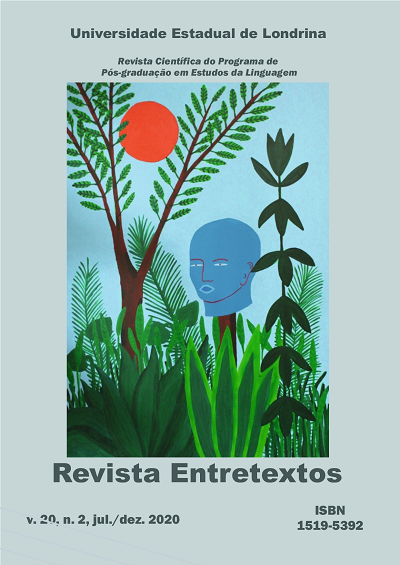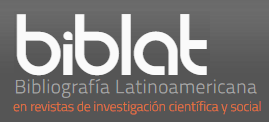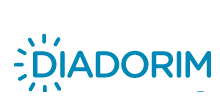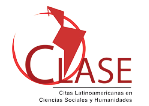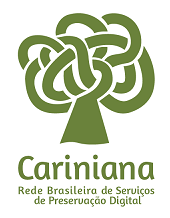Incorporando às sequências didáticas no ensino básico a análise de memes trazendo sentenças anômalas – em desobediência à seleção semântica
DOI:
https://doi.org/10.5433/1519-5392.2020v20n2p79Palabras clave:
Semântica, Ensino, Interação.Resumen
O presente artigo reporta atividades didático-pedagógicas que tomam como premissas hipóteses da semântica formal, como a seleção semântica e a gramática interna dos falantes. A partir de um estudo de caso de livros didáticos e da nossa vivência como professores, percebemos que sentenças anômalas e seleção semântica não são temas articulados nem discutidos na escola.
Para preencher essa lacuna, desenhamos atividades de interpretação de memes, executadas com alunos do 7o ano do ensino fundamental. Verificamos que o aluno é capaz de interpretar sentenças anômalas a partir de seus conhecimentos inerentes e de reconhecer a ironia e o humor produzidos pela anomalia em memes. Oferecemos a descrição dessas atividades como contribuição a educadores interessados em práticas discursivas textuais, associadas ao
conhecimento inerente de gramática do falante. Apresentamos um plano de atividades com o uso de memes, detalhando os conhecimentos trabalhados na experiência. Esta proposta é um tijolinho na construção de uma educação linguística mais crítica e reflexiva.
Descargas
Citas
BASSO, Renato Miguel; OLIVEIRA, Roberta Pires. Feynman, a linguística e a curiosidade, revisitado. Matraga: estudos linguísticos e literários, Rio de Janeiro, v. 19, n. 30, p. 13-40, 2012.
CAMPOS, Haroldo. Galáxias. São Paulo: Ex-Libris, 1984.
CANÇADO, Marcia. Manual de semântica: noções básicas e exercícios. Belo Horizonte: Editora UFMG, 2008.
CANÇADO, Marcia. Um estatuto teórico para os papéis temáticos. In: MULLER, Ana Lúcia; NEGRÃO, Esmeralda; FOLTRAN, Maria Jose (org.). Semântica formal. São Paulo: Editora Contexto, 2003. p. 95-124,
CANI, Josiane Brunetti. Multimodalidade e efeitos de sentido no gênero meme. Revista Periferia, Rio de Janeiro, v. 11, n. 2, p. 242-267, maio/ago. 2019.
CHOMSKY, Noam. Lectures on government and binding. Dordrecht: Foris, 1981.
DUARTE, Maria Eugenia Lamoglia. Termos da oração. In: Vieira, Sílvia Rodrigues; Brandão, Sílvia Figueiredo. (Orgs.) Ensino de gramática: descrição e uso. São Paulo: Contexto, 2007.
GUERRA, Christiane; BOTTA, Mariana Giacomini. O meme como gênero discursivo nativo do meio digital. Domínios de Lingu@gem, Uberlândia, v. 12, n. 3, p. 1859-1877, 2018.
HORTA, Natalia Botelho. O meme como linguagem da internet: uma perspectiva semiótica. 2015. Dissertação (Mestrado em Comunicação) - Universidade de Brasília, Brasília, 2015. Disponível em: http://repositorio.unb.br/bitstream/10482/18420/1/2015_NataliaBotelhoHorta.pdf. Aceso em: 9. set. 2019.
JACINTHO, Mônica Franco (ed.). Araribá Plus - português, 7o ano. 5. ed. São Paulo: Editora Moderna, 2018.
LEU, Donald J.; KINZER, Charles K.; COIRO, Julie; CASTEK, Jill; HENRY, Laurie A. Novas literacias: uma teoria de duplo nível da natureza mutável da alfabetização, instrução e avaliação. In: RUDDELL, Robert B.; UNRAU, Norman J. Theoretical models and processes of reading. Newark, DE: International Reading Association, 2013.
MEMES e gifs de engraçado. 2018. Disponível em: https://pt.dopl3r.com/memes/engra%C3%A7ado/atallanlac-primeiro-eu-beijo-o- problema-depois-eu-vejo-q-eh-um-problema-dai-q-eu-me-apaixono-pelo-problema/230744. Acesso em 18 dez. 2019.
OLIVEIRA, Roberta Pires. A linguística sem Chomsky e o método negativo. ReVEL, [S. L.], v. 8, n. 14, 2010.
OLIVEIRA, Roberta Pires. Semântica formal: uma breve introdução. Campinas, SP: Mercado de Letras, 2012.
PASCHOALIN, Maria Aparecida; SPADOTO, Neuza Terezinha. Gramática: teoria e atividades. Londrina: Editora FTD, 2019.
PESTANA, Fernando. A gramática dos concursos públicos. São Paulo, SP: Editora Método, 2013. PINTEREST. Disponível em: https://br.pinterest.com/pin/859061697651351377/.
Acesso em: 22 dez. 2019.
QUADROS, Ana Gomes; MENDES, Luciana Sanchez. Para conhecer semântica. São Paulo: Contexto, 2018.
SCHNEUWLY, Bernard; DOLZ-MESTRE, Joaquim. Os gêneros escolares. Das práticas de linguagem aos objetos de ensino. Revista Brasileira de Educação, Rio de Janeiro, n. 11, 1999.
THAILA Ayala faz post polêmico na web e internautas repercutem negativamente. GQ, Rio de Janeiro, 26 abr. 2019.Disponível em: https://gq.globo.com/Musa/noticia/2019/04/thaila-ayala-faz-post-feminista-na-web-e- internautas-repercutem-negativamente.html. Acesso em: 18 dez. 2019.
VIEIRA, Silvia Rodrigues. Três eixos para o ensino de gramática. In: VIEIRA, Silvia Rodrigues (org.). Gramática, variação e ensino: diagnose e propostas pedagógicas. São Paulo: Blucher, 2018.p. 47 -60.
VIEIRA, Silvia Rodrigues; BRANDÃO, Silvia Figueiredo (org.). Ensino de gramática: descrição e uso. São Paulo: Contexto, 2007.
Descargas
Publicado
Cómo citar
Número
Sección
Licencia
Entretextos adota a Licença Creative Commons Attribution 4.0 International, portanto, os direitos autorais relativos aos artigos publicados são do/s autor/es.
Sob essa licença é possível: Compartilhar - copiar e redistribuir o material em qualquer suporte ou formato. Adaptar - remixar, transformar, e criar a partir do material, atribuindo o devido crédito e prover um link para a licença e indicar se mudanças foram feitas.

